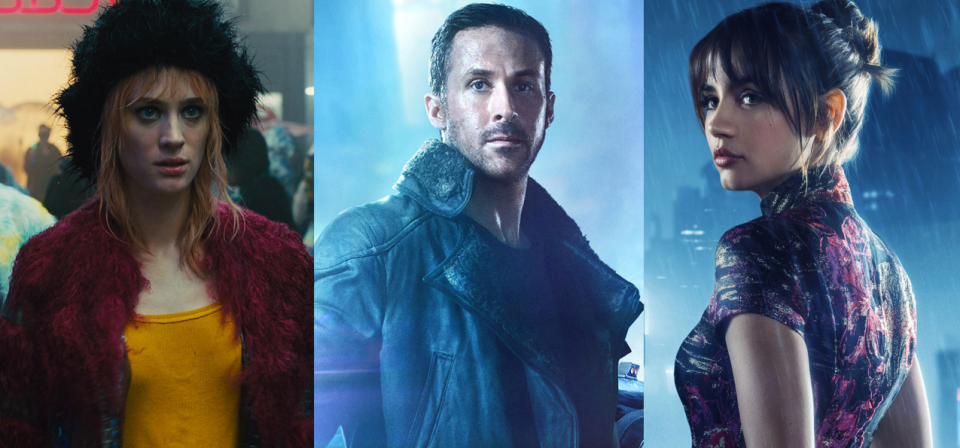Predicting the future is not easy, but “Blade Runner 2049” seems to be mostly correct. This is why we are surprised to see holographic human figures instead of companion robots in Blade Runner 2049.
Recently, some serious questions have been raised, including the future of emotions, hyper realistic sex dolls, companion robot revolution, and the next development. They also asked another important question about lifesize sex dolls: “Can we make people indifferent?”
Sex dolls and holographic portraits
Matt Miller of “Mr. Fashion” wrote: “The much-anticipated “Blade Runner 2049″ is a sequel to Ridley Scott’s classic. It extends the themes and concepts of the original work well— -A new and visually stunning exploration of the near-future dystopia that has changed the future of science fiction.”
“Like the 1982 movie style, “Blade Runner 2049″ also provides a bizarre and charming erotic scene. In the next few years, fans and film critics will discuss this scene.”
The relationship between the cloned Blade Runner K played by Ryan Gosling and the holographic partner Joey played by Amas reminds us of the future of sex dolls and companion robots, and the future of the relationship between the sexes.
In the day and night world of Amazon’s Alexa, Apple’s Siri, and Google’s artificial intelligence assistant, the relationship between humans and robots or artificial intelligence suddenly becomes very real and traceable.
The problem with Joey’s role is obviously related to her form. She does not exist in a physical sense, which prevents her from expressing her feelings like humans or clones-whether real or unreal. This is interesting because humans seem to be biological and emotional creatures. We must be able to see, be able to feel, but is it enough to see? Do we really want to talk to holographic portraits in 2049? I don’t think so.
The sex doll revolution has begun. Exquisite robotic sex dolls have surpassed holographic portraits to some extent. What about the next 10 or 20 years?
Mariette, a copy of the “basic model”, this is another level. A “copy person”, a synthetic person, is more important than a companion robot or a life size sex doll. From any angle, this is a more mysterious and vague future. Ethically speaking, to what extent are we willing to explore technology and biology? To what extent are we willing to push acceptable limits?
Just like the emotional scenes in the movie “Blade Runner” and the emotional scenes between Jackie Phoenix and Scarlett Johansson (at least her voice) in the 2013 movie “She”, sex dolls are still suffering Controversial and easily misunderstood.
Interestingly, “She” is also a movie focused on analyzing the emotions of artificial life—especially in a relationship.
There have been many opinions about the dangers of full body sex dolls to human emotions and interpersonal relationships. In addition, as Matt Miller pointed out: The film took almost no time to truly explore Mariette’s character and the ethics behind creating a sentient sex doll.
We don’t know how she feels about the three-way transaction, we only know that this is a plot device—a well-designed excuse for her to put a tracking device in K’s jacket.
Companion robots are clones
In the original movie, the Prius played by Daryl Hannah is a copy of the “basic model”-a companion robot. LifeSize Sex dolls are becoming more and more popular, and the latest robot Samantha even appeared on “This Morning”. Domestic sex doll companies are also developing our own version of smart sex dolls. However, it may take longer to develop a truly intelligent companion robot. But who can explain it clearly?
- Share on:
LOVED BY CUSTOMERS
-
5’5″ (168cm) Xia – D Cup Medium Boobs Asian Curvy Sex Doll
Original price was: €1,958.42.€1,057.22Current price is: €1,057.22. -
Beautiful Fashion Model Lifelike Sex Doll 158cm – Rasine
Original price was: €1,790.46.€758.81Current price is: €758.81. -
Joan – 158cm (5ft2) Sexy Slimming Blonde Sex Doll
Original price was: €1,619.09.€758.81Current price is: €758.81. -
Luxury Collection Sex Doll | 5’ 2” Height (158CM) Aira
Original price was: €1,705.20.€1,022.27Current price is: €1,022.27.















